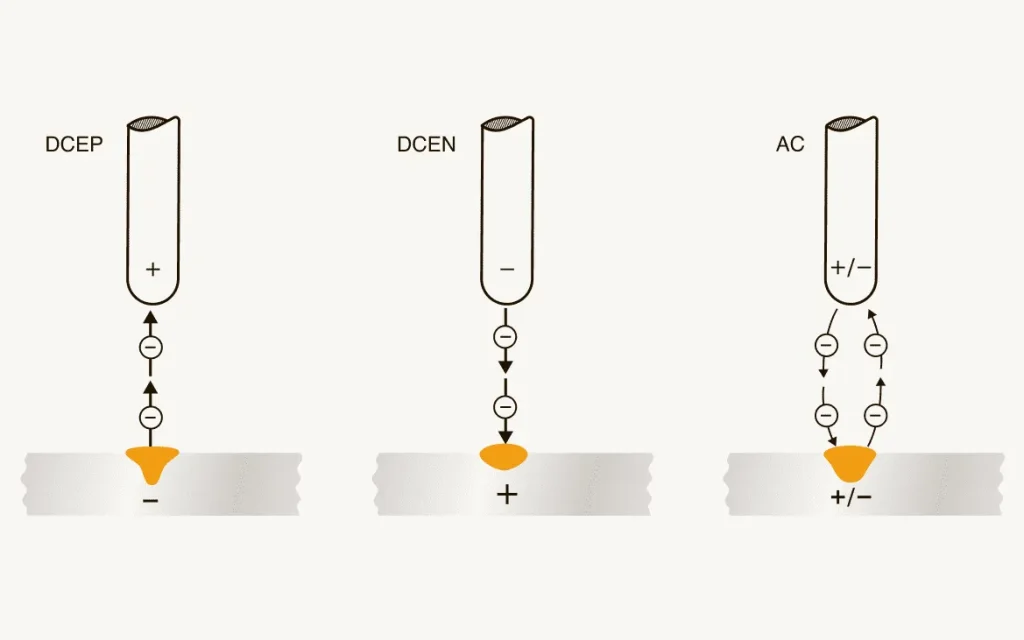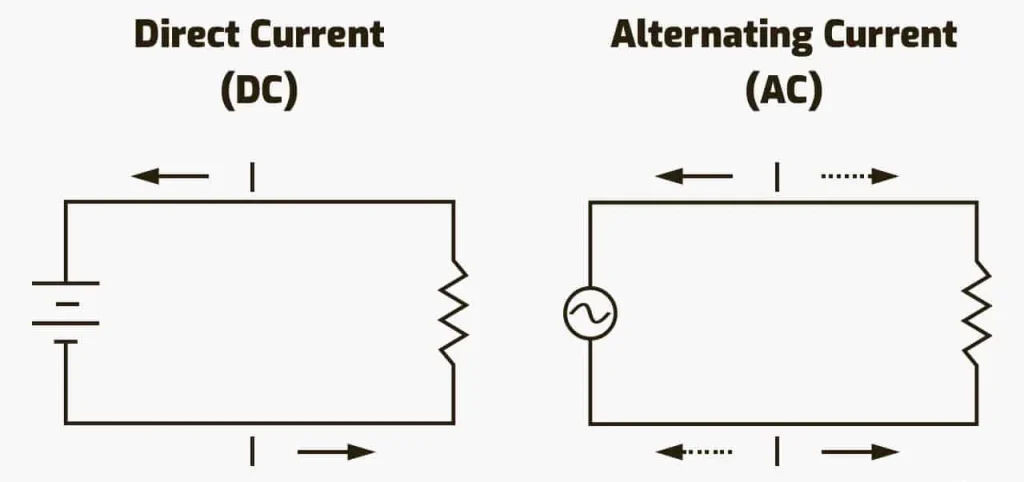Welding methods play a crucial role in determining the quality and efficiency of a welding project. Among the various methods available, Stick Welding (SMAW) and Tungsten Inert Gas (TIG) Welding (GTAW) are widely used for their unique advantages. However, the choice between using Alternating Current (AC) or Direct Current (DC) for these methods significantly impacts the welding outcome.
Selecting the right welding method and current type is essential for achieving optimal results. This article aims to compare Stick Welding and TIG Welding with both AC and DC, providing insights into their working principles, advantages, and disadvantages. By understanding these differences, welders can make informed decisions that enhance their project’s quality and efficiency.
Stick Welding (SMAW)
Introduction to Stick Welding
Stick Welding, also known as Shielded Metal Arc Welding (SMAW), is one of the oldest and most widely used welding processes. It involves the use of a consumable electrode coated with flux to lay the weld. An electric current is used to create an arc between the electrode and the metals to be joined. This process is popular due to its simplicity, versatility, and ability to be performed in various environments, including outdoors and on rusty or dirty surfaces.
Stick Welding with AC
Working Principle: In AC Stick Welding, the electric current alternates direction, typically at a frequency of 50 or 60 Hz. The electrode and the workpiece are connected to an AC power source, causing the arc to extinguish and reignite with each half-cycle.
Advantages:
- Lower Cost: AC welding equipment is generally less expensive than DC equipment, making it a cost-effective choice for many applications.
- Self-Cleaning Action: The alternating current helps remove oxides and impurities from the weld area, which is beneficial when working with certain metals like aluminum.
- Less Affected by Magnetic Arc Blow: AC welding is less influenced by the magnetic properties of the material, reducing the occurrence of arc blow.
Disadvantages:
- Less Stable Arc: The constant change in current direction can cause the arc to be less stable, making it harder to maintain a consistent weld.
- More Difficult to Control: Due to the instability of the arc, AC Stick Welding requires more skill and experience to achieve high-quality results.
Stick Welding with DC
Working Principle: In DC Stick Welding, the electric current flows in a single direction, either from the electrode to the workpiece (DC electrode negative, DCEN) or from the workpiece to the electrode (DC electrode positive, DCEP). This unidirectional flow provides a stable arc, which is easier to control and manage during the welding process.
Advantages:
- More Stable Arc: The steady current flow in DC welding creates a stable arc, resulting in more consistent welds and easier management.
- Better Control: The stable arc allows for finer control over the welding process, making it easier to achieve precise welds. This is particularly beneficial for tasks requiring detailed work or when welding thin materials.
- Deeper Penetration: DC welding provides better penetration, which is advantageous for welding thicker materials and ensuring strong welds.
Disadvantages:
- Higher Cost: DC welding equipment is generally more expensive than AC equipment. This higher initial cost can be a barrier for small businesses or hobbyists.
- Affected by Magnetic Arc Blow: DC welding is more susceptible to magnetic arc blow, a phenomenon where the arc becomes unstable due to the magnetic field of the material. This can be challenging when working with magnetized materials or those with strong magnetic properties.
Comparison of AC and DC Stick Welding

- Arc Stability: DC welding offers a more stable arc compared to AC welding, which is beneficial for achieving consistent and high-quality welds.
- Control and Adjustability: DC welding provides better control over the welding process, allowing for finer adjustments and more precise welds. AC welding, on the other hand, requires more skill to manage due to its unstable arc.
- Applications: AC welding is suitable for applications where cost is a primary concern and where the magnetic properties of the material may affect the weld. DC welding is ideal for tasks requiring high precision, deep penetration, and consistent weld quality.
Tungsten Inert Gas (TIG) Welding (GTAW)
Introduction to TIG Welding
Tungsten Inert Gas (TIG) Welding, also known as Gas Tungsten Arc Welding (GTAW), is a precision welding process that uses a non-consumable tungsten electrode to produce the weld. The weld area is protected from atmospheric contamination by an inert shielding gas, usually argon or helium. TIG welding is known for producing high-quality, clean welds with excellent aesthetic and structural properties.
TIG Welding with AC
Working Principle: In AC TIG welding, the current alternates between positive and negative polarity. This switching helps to clean the oxide layer from the surface of metals like aluminum and magnesium, improving weld quality.
Advantages:
- Cleaning Action: The alternating current helps remove oxides and contaminants from the weld area, which is particularly beneficial when welding metals like aluminum.
- Balanced Heat Distribution: AC welding balances heat distribution between the electrode and the workpiece, reducing the risk of electrode overheating and extending its lifespan.
- Versatility: AC TIG welding is versatile and can be used for a wide range of non-ferrous metals, making it ideal for applications requiring clean and aesthetically pleasing welds.
Disadvantages:
- Less Stable Arc: Similar to AC Stick welding, the arc in AC TIG welding is less stable due to the constant change in current direction. This can make it more challenging to maintain a consistent weld.
- More Skill Required: Managing the less stable arc requires more skill and experience, making AC TIG welding less suitable for beginners.
TIG Welding with DC
Working Principle: In DC TIG welding, the current flows in a single direction, either from the electrode to the workpiece (DCEN) or from the workpiece to the electrode (DCEP). This unidirectional flow creates a stable and consistent arc, which is easier to control.
Advantages:
- Stable Arc: DC TIG welding provides a very stable arc, which is crucial for achieving high-quality, consistent welds. This stability is particularly beneficial for precision welding tasks.
- Better Control: The stable arc in DC TIG welding allows for better control over the welding process, making it easier to achieve precise and clean welds.
- Deep Penetration: DC welding offers deeper penetration, which is essential for welding thicker materials and ensuring the strength and integrity of the weld.
- Less Electrode Wear: DC welding tends to cause less wear on the tungsten electrode, extending its lifespan and reducing the need for frequent replacement.
Disadvantages:
- No Cleaning Action: Unlike AC TIG welding, DC welding does not provide the cleaning action necessary for removing oxides from metals like aluminum. This makes DC TIG welding less suitable for these types of materials.
- Higher Equipment Cost: DC TIG welding equipment is generally more expensive than AC equipment, which can be a consideration for those on a tight budget.
Comparison of AC and DC TIG Welding
- Arc Stability: DC TIG welding offers a more stable arc compared to AC TIG welding, which is advantageous for achieving high-quality welds.
- Control and Precision: DC TIG welding allows for better control and precision, making it ideal for tasks requiring detailed and clean welds. AC TIG welding, while versatile, requires more skill to manage due to its less stable arc.
- Material Suitability: AC TIG welding is better suited for welding non-ferrous metals like aluminum and magnesium due to its cleaning action. DC TIG welding is ideal for ferrous metals and applications requiring deep penetration and high precision.
General Comparison Between AC and DC Welding Methods

Arc Stability
- AC Welding: The arc in AC welding is less stable due to the constant reversal of current direction. This instability can make it challenging to maintain a consistent and high-quality weld, especially for beginners.
- DC Welding: DC welding provides a stable and continuous arc, which is easier to control and manage. This stability is beneficial for achieving precise and consistent welds, making DC welding more suitable for detailed and high-quality work.
Control and Adjustability
- AC Welding: Due to the less stable arc, controlling AC welding requires more skill and experience. Adjusting the weld parameters to achieve the desired outcome can be more challenging with AC welding.
- DC Welding: The stable arc in DC welding allows for finer control and better adjustability. Welders can easily manipulate the current settings to suit different materials and thicknesses, resulting in higher quality welds.
Cost and Economic Efficiency
- AC Welding: AC welding equipment is generally less expensive than DC equipment, making it a cost-effective option for many applications, especially where budget is a concern.
- DC Welding: Although DC welding equipment tends to be more expensive, the higher initial cost is often justified by the improved weld quality, ease of control, and versatility in different applications.
Suitable Applications
- AC Welding: Best suited for welding tasks where cost is a primary concern and precision is less critical. It is commonly used for welding non-ferrous metals like aluminum and for projects involving magnetized materials.
- DC Welding: Ideal for applications requiring high-quality, precise welds. It is commonly used for welding ferrous metals, precision manufacturing, and tasks involving thin materials or requiring deep penetration.
Conclusion
Choosing the appropriate welding method—AC or DC—depends on various factors specific to the welding task at hand. Each welding method has its unique advantages and disadvantages, making them suitable for different applications.
- AC Welding: Cost-effective, self-cleaning, less affected by material magnetism, but less stable and harder to control.
- DC Welding: Stable arc, better control, less affected by temperature changes, suitable for high-strength and aesthetic welds, but more expensive and affected by magnetic arc blow.
Recommendations:
- For Beginners and Hobbyists: AC welding equipment might be a more cost-effective starting point, especially for general repairs and non-critical projects.
- For Professional Welders and Industrial Applications: DC welding is recommended due to its superior arc stability and control, which are crucial for high-quality and demanding welding tasks.
In conclusion, selecting the right welding method ensures the quality and efficiency of the welding process, contributing to the overall success of the project. By understanding the strengths and limitations of both AC and DC welding, welders can make informed decisions that align with their specific needs and conditions.
Leave a Reply